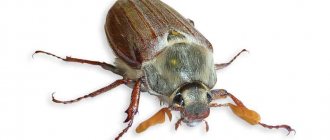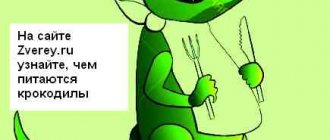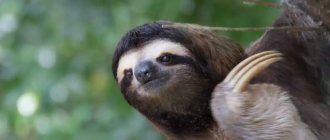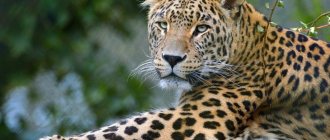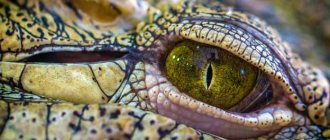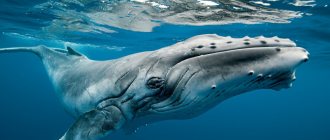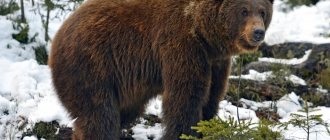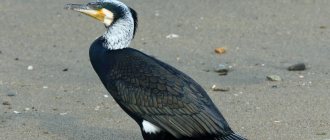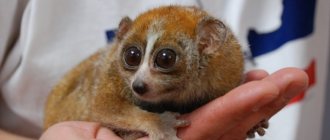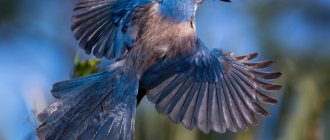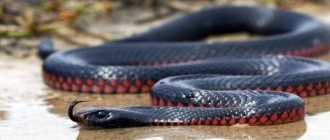The most mysterious predators on the planet, the closest relatives of dinosaurs, reptiles that inspire horror and are shrouded in a number of conjectures and stereotypes - this is all about them. Many people perceive crocodiles, alligators and caimans as soulless killing machines, but these apex predators behave quite nobly and have their own culture. Crocodiles are not generally considered beautiful, probably precisely because the overwhelming fear of their power and strength makes one forget that these creatures have a special elegance and grandeur. Here is a selection of fifteen of the most interesting representatives of the species.
Nile crocodile
In size, the Nile crocodile is second only to the saltwater crocodile - it grows up to five meters and weighs on average about four hundred kilograms. They have a beautiful color that changes with age - young crocodiles are greenish-bronze with dark stripes on the back and tail, while adults become dark green with small black spots.
Nile crocodiles have an eyelid in which glands are located, with the help of which tears are secreted to cleanse the eyes of dust and dirt - by the way, the expression “crying crocodile tears” originated precisely from this phenomenon.
This majestic animal existed on the planet long before the appearance of the human race. The ancestors of Nile crocodiles appeared on earth about 80 million years ago.
How many years do crocodiles live in the wild?
Most members of the order are true long-livers. The average life expectancy of a crocodile is 50-60 years. Some individuals live up to 70 and even 100 years.
At the same time, not all cubs born can reach such a respectable age. Most of the eggs laid by females and the young hatched from them become food for birds, turtles, monitor lizards, anacondas, and some mammals. A decrease in the mortality rate is observed only among crocodiles that have reached adolescence.
Individuals that have gained a mass of several kilograms have every chance of surviving to old age due to the absence of natural enemies, with the exception of larger relatives.
Saltwater crocodile
The saltwater crocodile rightfully has the title of the largest reptile on the planet - the predator’s body length is about seven meters, and its weight can reach as much as two thousand kilograms!
It existed back in the time of dinosaurs. Modern saltwater crocodiles, by the way, are almost no different from their ancestors. Previously, the skin of young crocodiles was used to make bags and shoes - but, fortunately, we live in an era of responsible consumption, and luxury brands are refusing to produce products from crocodile skin.
Saltwater crocodiles sometimes attack people, but usually cases of bites from dangerous predators do not result in human death. We are not too interested in them as food - they are forced to attack, protecting their territory and cubs.
Carnivore diet
Unpretentiousness in food and the ability to go without food for a long time is a very useful trait in the world of wildlife. Scientists suggest that it was this feature that allowed crocodiles to survive at a time when dinosaurs became extinct.
Since the predator is not particularly picky about food, its digestive system is ready for any surprises: firstly, blood with a high content of carbon dioxide is driven to the stomach, which activates the release of high concentration digestive secretions, and secondly, the teeth in the huge mouth can grow over the course of throughout life, so the loss of any tooth is not terrible, thirdly, in the thick-walled stomach there are gastroliths - special stones that contribute to the grinding of food. This allows you to swallow food almost without chewing; it will still be perfectly digested.
Large animals are preferred on the crocodile menu, such as antelopes, buffaloes, hippos, gazelles, etc. Sometimes predators even encroach on elephants. The larger the prey, the better, because crocodiles have brutal appetites. But in moments of hunger, they can also covet small prey, such as snakes, monkeys, frogs, etc. It is irrational for such large predators to hunt small animals, since the energy expenditure during hunting for such small things is high, and there are not enough calories in it.
The diet of young animals is significantly different: they are not able to catch large prey, so they have to be content with chicks, crustaceans, fish, mollusks, etc.
Orinoco crocodile
The Orinoco crocodile is the rarest on the entire planet Earth. The reason is that representatives of this species were previously uncontrollably destroyed for leather. About fifty years ago, hunting of Orinoco crocodiles was banned, but the number of these reptiles still does not exceed 1,000 individuals, and the species is under threat. At the moment, everything possible is being done to preserve the species, but the situation is aggravated by poachers.
The color of Orinoco crocodiles varies - there are yellowish, dirty brown and light green individuals. They have amazingly beautiful skin, for which they had to undeservedly pay.
Do crocodiles really sleep with one eye open?
An Australian legend says that crocodiles, even in their sleep, do not lose control of the situation - they close their eyes one at a time. Surprisingly, this old tale has been confirmed. Scientists have proven that the hemispheres of the brain of these animals rest in turns.
The sleep of many other animals, such as sperm whales and dolphins, follows approximately the same pattern.
Capricorn and 3 other zodiac signs whose glass is always half empty
For men over 50: a selection of spectacular haircuts to create an impressive look
“Start by finding yourself”: Tina Kandelaki gave advice to single women
New Guinea freshwater crocodile
Compared to other relatives, the New Guinea crocodile is a rather small reptile. The maximum body length of a male of this species is 3.5 m, and a female is 2.7. Freshwater crocodiles are dark green in color with vaguely defined black spots.
This species is in danger of extinction. That is why crocodile farms are very common in New Guinea, in which newborn crocodiles are protected from numerous enemies in the natural environment. Unfortunately, only 15% of farms can provide good maintenance, so efforts to preserve the species are often in vain.
New Guinea (Crocodylus novaeguineae)
A relatively small of the true crocodiles. According to DNA studies, it is recognized as a close relative of the Philippine, but isolated as a separate species. Habitat: Inland waters of the island of New Guinea. Until 1996, it was listed in the Red Book with the status of “threat of extinction”, then with an assessment of “least concern”. Like all crocodiles, it was destroyed in the fifties and sixties of the last century because of its valuable skin. In 1970, after the adoption of a program of conservation measures, the numbers were restored to the natural continuation of the population by 1996. Now, according to various estimates, there are up to 50 thousand.
The size of the crocodile Crocodylus novaeguineae ranges from 2.7 meters in females to 3.5 meters in males. Measured body weight: 294.5 kg.
The New Guinea crocodile is divided into two populations - northern and southern. The lifestyle (especially clutches) of crocodiles in them is slightly different. In the northern population, the nest is built on water from plants, in the southern population - more often on land.
The New Guinea crocodile is the most vocal crocodile: both babies and adults make a huge number of sounds for different life situations, which allows them to “communicate.”
Siamese crocodile
Another species is in danger of extinction. Most Siamese crocodiles are found in zoos rather than in their natural habitat. People killed Siamese crocodiles for the sake of their thick, beautiful skin and to prepare exotic dishes from crocodile meat.
The Siamese crocodile is very similar to the saltwater crocodile, but there are several nuances - Siamese crocodiles are much smaller (maximum weight -350 kg) and have a wider muzzle. Siamese crocodiles often interbreed with saltwater crocodiles.
Where does the crocodile live: habitat
The habitat of these reptiles, which have inhabited our planet for more than 200 million years, extends to all continents, excluding Antarctica. Any child, when asked: “Where does a crocodile live?”, will answer without hesitation: “In Africa!” Yes, the crocodile also lives in Africa.
There are varieties that are found in different countries and continents, and there are endemics - they inhabit one specific territory. For example, the Philippine crocodile lives only on the islands of the same name, while the saltwater saltwater crocodile can live in India, Indonesia, and Northern Australia.
Gangetic crocodile
The only representative of the gharial family that has survived to date. It has a long body (can reach 5.5 meters), but weighs no more than 250 kg. A distinctive feature of gharials is their very narrow jaws and a huge number of teeth. Typically, crocodiles have about 70 teeth, but the Gangetic crocodile has more than 100.
Gharials move slowly and are therefore absolutely safe for humans. This species is in danger of extinction due to uncontrolled extermination for meat, skins and eggs.
African narrow-snout (Mecistops cataphractus)
Classified as an endangered species, little studied. Habitat - throughout western tropical Africa from Lake Tanganyika and Lake Mweru in the east / southeast to the Gambia River in the west. Length up to 4 meters (although individuals over 3-3.5 meters have not been seen during observations today), weight - presumably up to 230 kg.
It feeds mainly on fish, adults can eat turtles and birds, females lay up to 16 large eggs, the clutch is not guarded, the hatching period is up to 110 days. They live in rivers overgrown with vegetation; according to estimates, there are now up to 20,000 adult individuals; their numbers are constantly decreasing. They live in 10 subpopulations. Scientists cannot accurately answer the question of how long the crocodiles Mecistops cataphractus live due to insufficient knowledge of the species. Estimated data from the Red Book is 25 years.
Chinese alligator
The main difference between alligators and real crocodiles is the shape of the muzzle. In crocodiles it is sharper, V-shaped, while in alligators it is U-shaped, rounded (yes, the crocodile Gena, known to all of us from childhood, was actually an alligator).
The Chinese alligator has a huge tail, with which it protects itself from enemies, builds nests and moves in the water. Chinese alligators are very small reptiles. Males grow up to two meters, and females up to one and a half meters. The average weight of representatives of this species is only 40 kg.
Habitats
Representatives of the order of crocodiles live in the tropical regions of the planet. Their distant ancestors lived on land, but modern species lead a semi-aquatic lifestyle. They prefer fresh lakes, rivers or tropical swamps, where they spend most of their lives. At the same time, reptiles feel great even in bodies of water with strong salinity and are found even off the coast of the sea. Special glands located in the eyes and mouth help them remove salts from the body. The legend about the “crocodile tears” that they shed when killing their prey is widely known among people. Reptiles really “cry”, but not out of pity, but from excess salt.
The range of crocodiles covers almost all of Africa, most of South America, the northeast coast of Australia and all of Oceania. They live throughout Central America and on the coast of Mexico, in the states of Florida and Louisiana (USA). In Eurasia they are found from Pakistan to the Japanese Islands.
White alligator
Yes, in nature there really is such a unique phenomenon as alligators with white skin and blue eyes. Now there are only 12 of them on the planet.
Caring for albino babies is a very labor-intensive task, because they need protection from sunlight and a special diet. Most albino alligators have severe vision problems. In the wild, as a rule, such unique individuals do not survive due to the impossibility of camouflage - therefore they are forced to stay in nature reserves and zoos.
Breeding period and offspring
Crocodiles are considered polygamous representatives of reptiles. The mating season is characterized by bloody fights between males for the attention of the chosen female. When a pair forms, the female lays her eggs in the shallows. To hide them from prying eyes, she covers the eggs with earth and grass. Some females bury them deep into the ground. The number of eggs laid depends on the species of representatives. Their number can be either 10 or 100. During the incubation period, the female does not leave her clutches, as she constantly protects them from potential danger. The timing of the appearance of crocodiles depends on climatic conditions, but, as a rule, it lasts no more than 3 months. Small crocodiles are born at the same time, and their body size barely reaches 28 centimeters. Trying to get out of the shell, newborns begin to squeak loudly to attract the mother's attention. If the mother has heard, she helps her offspring get out of their eggs with her sharp teeth, which she uses to break the shell. After successful hatching, the female takes her children to the pond.
Just a couple of days later, the mother breaks off contact with her offspring. Small crocodiles go out into the wild completely unarmed and helpless.
Not all species monitor their offspring. Most representatives of gharials leave their “nest” after laying eggs and completely leave their offspring.
Since crocodiles are forced to mature quite early, their mortality rate at an early age is quite high. Small crocodiles are forced to hide from wild predators, and at first they feed exclusively on insects. Already growing up, they can cope with hunting fish, and as adults they can hunt large game.
Black caiman
The black caiman is the largest and strongest representative of alligators. It can grow up to 4.5 meters and weigh up to 300 kg. It has black scaly skin with pale yellow spots. They are distinguished from other alligators by their narrower muzzle and large round eyes.
Fortunately, black caimans are safe today - but in the 50s of the 20th century, 90% of the population was destroyed. Yes, the reason for this was again the demand for exotic crocodile skin.
Features of physiology
The body of crocodiles is covered with a dense horny layer. It consists of dead cells, so molting is not typical for animals. The top of their skin is covered with round bone plates, under which there are various channels and cavities with nerve cells and blood vessels.
On land, reptiles seem slow and clumsy, but in water they can accelerate up to 30 km/h. More than 50% of their body is muscle, which provides significant power. The bite of a crocodile is considered the most powerful of all existing animals. In the largest species it ranges from 145 to 340 atmospheres.
Crocodiles have excellent vision. Their narrow vertical pupils provide a 270-degree viewing angle, leaving blind spots in front of the muzzle and above the back of the head. Unlike other reptiles, they have good hearing. The shields on the skin perform a tactile function and are tuned to be sensitive to vibration. This helps animals navigate in the water.
Sharp-snouted crocodile
The most common of the four species of true crocodiles that currently exist. It is a fairly large reptile, can reach a length of up to 6 meters and weigh up to 500 kg. Due to the pointed shape of the muzzle, the sharp-snouted crocodile looks even more intimidating than other large reptiles.
This species has a very interesting structure: a sharp-snouted crocodile can completely immerse itself in water, leaving only its eyes on the surface. Because of this, people are often afraid of him, although there is no reason for this - firstly, sharp-snouted crocodiles themselves avoid people, and secondly, the pointed shape of the jaw forces them to live on a fish diet for life. An attack is only possible in self-defense.
How do they reproduce?
Crocodiles reach sexual maturity at the age of 8-10 years. In many species, reproduction does not depend on the season and can occur throughout the year.
Mating of crocodiles usually occurs in water. Both males and females mate with multiple partners. The mating season is accompanied by fights between males, noisy splashes, growls and howls. After its completion, the females look for or prepare a place for future laying. They can lay up to several dozen eggs at a time. The female covers the clutch with earth or grass and remains nearby until the cubs appear.
The duration of embryo development and their sex depend on air temperature. Since the babies cannot get out of the eggs on their own, they squeak loudly, calling their mother, who digs up the clutch and breaks the shell. The length of newborn crocodiles is 20-30 cm.
The female carries the hatched babies into the river: she picks them up several in her mouth and releases them into the water. The cubs are cared for until they are two years old.
VARAN
Gharial crocodile (false gharial)
It is a close relative of the gharial. A very rare species, recognized as endangered - there are about 2,500 individuals left in nature. Gharial crocodiles are suffering greatly from the deteriorating environment and polluted water bodies. The health and life expectancy of this species especially depends on environmental conditions.
It has a narrow, elongated muzzle with many teeth, typical of the gharial. It is a fairly large predator - males can grow up to five meters and weigh up to 250 kg. The gharial crocodile has brownish-greenish skin with randomly distributed dark spots.
What do they eat?
Representatives of the order of crocodiles are predators. Small and medium-sized species eat fish, mollusks, crustaceans, various lizards, snakes and mice. Saltwater crocodiles that live on the Pacific coast of Australia even eat the poisonous aga toad. The diet of the Ghanaian gharial includes exclusively fish, which is responsible for the unusual shape of its jaws. In fact, the theory is not very confirmed, because its close relative, the gharial crocodile, also feeds on monkeys, otters, deer, pythons, wild pigs and other animals.
Large species of crocodiles are quite capable of coping with strong and mature prey. They hunt buffalo, livestock, zebra, antelope, dolphins, sea turtles, sharks, and birds flying over the water. They do not chew food, but swallow it. Crocodiles first tear large prey into pieces by moving their necks from side to side.
Cuvier's smooth-faced caiman
Cuvier's smooth-faced caiman, a member of the alligator family, is the smallest living crocodiles. The length of this miniature predator does not exceed one and a half meters, and caimans weigh only 6-7 kg.
Cuvier's caiman has skin so thick that it cannot even feel the blade of a knife. It is almost impossible to harm a caiman using bladed weapons. Due to the atypical structure of the jaw and smoothed brow ridges, this reptile at any age looks like a funny cartoon character, and not a cold-blooded predator.
Friendship between people and crocodiles
Zoologists believe that friendship between people and green reptiles is impossible, and it should not be allowed because the outcome will still not be in favor of humans. However, there is evidence of a fisherman from Costa Rica who recovered a five-meter dying crocodile wounded by a hunter. The man temporarily settled him in his pond, literally hand-fed him.
The fisherman released the healthy alligator into the river, but the grateful reptile began to return. The friendship lasted until the natural death of the crocodile.
There was a time in China when people caught crocodiles and chained them outside their houses, like dogs. The alligator was fed and watered, and he guarded the owner's property. True, as a result, the Chinese ate a crocodile grown to a decent size….
Blunt crocodile
The blunt-snouted crocodile has very modest dimensions: the size of the average male is about 1.5 meters, and the weight does not exceed 80 kg. Despite the fact that the skin of the blunt-snouted crocodile is difficult to process and has no special value, the species is considered vulnerable due to the environmental crisis. Due to its small size, this species of crocodile does not pose any danger to humans.
Combines the features of crocodiles and alligators. The blunt-snouted crocodile has a U-shaped snout commonly found in alligators, but the tooth structure matches that of a crocodilian. Color, as with most reptiles, depends on age - young individuals have a yellowish tint, and adult representatives of the species are dark brown.
Lifestyle
Literally all crocodiles are semi-aquatic reptiles. They spend most of their time in rivers and reservoirs, and appear on the shore only in the early morning or evening.
The body temperature of a crocodile depends on its habitat. The skin plates of these representatives accumulate the heat of sunlight, on which the temperature of the entire body depends. As a rule, daily temperature fluctuations do not exceed 2 degrees.
Crocodiles can spend some time hibernating. This period begins during a period of severe drought. At such moments, they dig themselves a large hole at the bottom of a drying reservoir.
Crocodile caiman
A small crocodile with a narrow, V-shaped snout. Males can grow up to 2 meters and weigh up to 40 kg. Young crocodile caimans have yellowish skin with stripes all over the body; as adults they acquire an olive color.
Also, their skin color changes depending on the weather - caimans darken in the cold. The skin of the crocodile caiman is very dense, with protective shields, and is almost impossible to process. This is what saved the species from complete extermination.
Freshwater (Crocodylus johnsoni)
Inhabits the rivers of Australia, does not go to sea and river mouths, for fear of being caught by a saltwater crocodile. It feeds on fish and small vertebrates. The average size is up to 3 meters; in the population in northern Australia the size is smaller. It is not dangerous for humans, since the compression force of its jaws is quite weak. How long crocodiles Crocodylus johnsoni live in captivity (in particular, in the Australian Zoo) is known exactly - up to twenty years, although presumably individual individuals can exist and grow up to a hundred years or more.
Paraguayan caiman
A relatively small crocodile, in rare cases it can reach 3 meters in length and weigh up to 60 kg. The Paraguayan caiman has “armor” on its belly that protects against bites from predatory fish and larger reptiles.
The Paraguayan caimans are distinguished from other caimans by their non-standard bite - the lower teeth extend beyond the upper ones, which is reminiscent of the structure of the dentition of piranhas. For this feature, it is commonly called the “piranha caiman.”
Juvenile Paraguayan caimans are yellow-green in color. Adults can be either yellowish or deep brown.
How are crocodiles similar to birds and dogs?
The anatomical structure of the crocodile is perfect from the point of view of hunting. His eyes are endowed with a third eyelid, which allows him to see perfectly under water and in the dark. For a long time before an attack, crocodiles lie motionless closer to the sunny surface of the water to better warm up the blood before jumping. The powerful head and tail allow you to stun the victim and break the spine in one blow.
With his tenacious teeth, he takes the prey to his storage and “marinates” for some time, then swallows it without chewing. An interesting fact: in those parts of the Ganges where the crocodile lives, the reptile’s “storerooms” often contain the bodies of the dead, whom Hindus send into the waters of the sacred river during a funeral ceremony.
To better digest and move food through the intestines, these reptiles swallow stones, like birds. True, the size and weight of the stones are somewhat different, sometimes about 5 kg. Having had enough, the crocodile rests and cools down. To do this, like a dog, he opens his mouth. Some researchers claim that crocodiles can live for almost a year without food.
